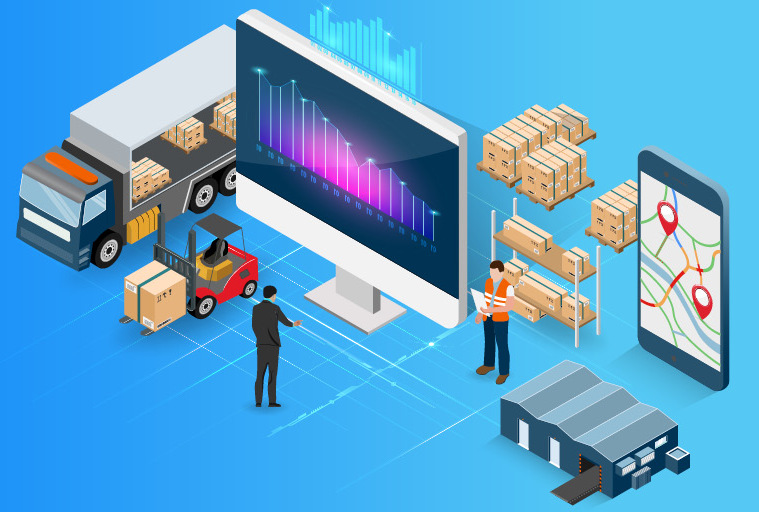Evolution of E-commerce business
E-commerce evolution established new permanent changes in retail operations. Online shopping introduced its unique concept to consumers during the 1990s. The world showed little sign of understanding the enormous business change this development would create. Digital storefronts currently control the entire retail industry. The pandemic exposed the world to fast-paced online shopping adoption rates that never would have occurred otherwise. Many consumers shopped online for the first time. New buying habits formed quickly. These patterns continue post-pandemic.
Consumer behaviors drive this constant change. Mobile shopping surged in the 2010s. E-commerce business evolution emerged shortly after COVID-19. Voice shopping followed with smart speakers. Each innovation responds to changing customer expectations. Younger generations expect seamless digital experiences. Older shoppers increasingly embrace online convenience. Rural communities gain access to previously unavailable products. E-commerce breaks down traditional shopping barriers effectively.
Digital Transformation Reshapes Retail Models
Digital transformation in business created new retail possibilities. Traditional stores faced adapt-or-die scenarios. Many brick-and-mortar retailers launched online platforms. Others developed hybrid models with physical and digital presences. Department stores reimagined their business approaches. Shopping malls repurposed excess space creatively. Legacy brands invested heavily in digital infrastructure. The retail landscape changed permanently.

Technology enables personalized shopping experiences. AI recommends products based on browsing history. Chatbots provide 24/7 customer service. Augmented reality technology delivers virtual trial capabilities to shoppers. These tools remove purchase barriers effectively. Customer data drives marketing strategies. Purchase history informs product development. User feedback shapes website improvements. The customer truly becomes central to business decisions.
Mobile Commerce Changes Shopping Habits
Smartphones revolutionized online shopping behaviors through digital transformation in business. Consumers now shop anywhere, anytime. Mobile-first design became essential for e-commerce sites. Apps offer more convenient shopping than websites. Push notifications drive engagement effectively. Location-based offers increase conversion rates. Mobile loyalty programs reward repeat customers. The smartphone became the primary shopping device.
Payment methods evolved alongside mobile adoption. Digital wallets gained popularity quickly. One-click purchasing reduced checkout friction. Biometric authentication improved security measures. These advances made mobile shopping seamless. Mobile payment adoption varies geographically. Asia leads in mobile payment usage. Western markets follow this trend gradually. The cashless revolution continues accelerating worldwide.
Social Commerce Creates New Sales Channels
Social media platforms have transformed into shopping destinations. Instagram and TikTok now feature integrated shops. Pinterest drives purchase decisions through inspiration. Facebook Marketplace connects local buyers and sellers. Shop tags appear in organic content. Swipe-up features link directly to products. Comment selling creates community engagement. Shoppers can enjoy shopping through entertainment-based formats that seamlessly blend both purposes.
Influence marketing brings large revenue streams to online stores. Content creators showcase products authentically. Unboxing videos influence purchase decisions. Live shopping events create urgency and excitement. Brands leverage these channels extensively. Micro-influencers target niche audiences effectively. Trust transfers from creator to product. Engagement rates often exceed traditional advertising. Return on investment continues improving annually.
Data-Driven Strategies Improve Customer Experience
Analytics tools reveal valuable consumer insights. Companies track browsing patterns and preferences. Heat maps show how users navigate websites. Conversion funnels identify drop-off points. A/B testing optimizes design elements continuously. Customer journey mapping reveals pain points. Sentiment analysis monitors brand perception. Data literacy becomes a competitive advantage.
Personalization increases customer satisfaction rates. Tailored email campaigns deliver relevant offers. Dynamic pricing optimizes revenue opportunities. Product recommendations boost average order values. These strategies build customer loyalty. Segmentation creates targeted marketing approaches. Behavioral triggers automate personalized messaging. Preference centers give customers control options. The one-size-fits-all approach disappears completely.
Logistics Innovation Meets Delivery Expectations
Fast shipping became a competitive requirement. Two-day delivery is now standard practice. Same-day options continue expanding. Some retailers offer delivery within hours. Free shipping influences purchase decisions significantly. Shipping costs affect cart abandonment rates. Delivery speed impacts brand loyalty. Customer expectations continue rising steadily.

Fulfillment centers moved closer to population centers. Automated warehouses improve efficiency dramatically. Robots pick and pack orders quickly. Drones and autonomous vehicles begin testing deliveries. These advances reduce delivery times significantly. Last-mile delivery presents ongoing challenges. Urban areas benefit from density advantages. Rural deliveries require creative solutions. The logistics race intensifies yearly.
Sustainability Concerns Influence Shopping Decisions
Eco-conscious consumers demand responsible practices. Brands respond with sustainable packaging options. Carbon-neutral shipping gains popularity. Ethical sourcing becomes a selling point. Transparency about environmental impact increases. Greenwashing receives immediate backlash. Genuine commitments earn consumer loyalty. Sustainability transforms from an option to a requirement.
Circular economy principles influence business models. Rental and subscription services reduce waste. Second-hand marketplaces gain mainstream acceptance. Repair services extend product lifespans. These approaches appeal to environmentally conscious shoppers. Upcycled products create unique value propositions. Take-back programs close production loops. Resource conservation becomes financially beneficial. Strategies for sustainability create ecological benefits that also strengthen financial outcomes.
Augmented Reality Enhances Online Shopping
Virtual try-on technology reduces return rates. Furniture shoppers visualize items in their homes. Makeup brands let customers test products virtually. Eyewear companies offer digital try-ons. Fashion retailers implement virtual fitting rooms. Home improvement stores offer visualization tools. Electronics companies demonstrate product features virtually. Return rates decrease with accurate pre-purchase visualization.
Implementation costs continue falling rapidly. More businesses adopt these technologies annually. Consumer expectations rise accordingly. Brands without AR capabilities may lose a competitive edge. Small businesses access affordable AR solutions. Template-based systems simplify implementation processes. Mobile devices already contain the necessary hardware. Adoption barriers decrease continuously across retail categories.
Voice Commerce Creates Hands-Free Shopping
Smart speakers facilitate convenient purchasing. Voice assistants handle routine reordering tasks. Voice search optimization becomes increasingly important. Conversational commerce grows steadily. Kitchen-based ordering increases significantly. Convenience products sell well through voice. List-making features simplify shopping. Ambient computing blends into daily routines seamlessly.
Challenges remain despite promising adoption rates. Voice recognition continues improving gradually. Security concerns affect consumer trust levels. Privacy questions require thoughtful solutions. These issues will determine voice commerce’s future growth. Multi-language support expands markets. Voice biometrics enhance security measures. Screen-free shopping appeals to busy consumers. This technology continues evolving rapidly.
Direct-to-Consumer Models Disrupt Traditional Retail
Brands increasingly sell directly to end users. Cutting out middlemen improves profit margins. Customer relationships strengthen through direct interaction. Data collection becomes more comprehensive. Brand storytelling reaches consumers directly. Product feedback loops shorten considerably. Manufacturing adjusts quickly to demand changes. Vertical integration provides competitive advantages.

Legacy brands follow digitally native startups. Nike reduces wholesale partnerships significantly. Apple pioneered the direct model successfully. Peloton built its business entirely direct-to-consumer. This trend continues accelerating rapidly. Subscription models guarantee recurring revenue. Community building fosters brand loyalty. Limited editions create shopping urgency. The relationship between brand and customer deepens substantially.
Global E-commerce Creates Borderless Retail
Cross-border selling opens vast market opportunities, driven by the digital transformation in business. International shipping becomes more accessible. Translation services reduce language barriers. Currency conversion happens automatically. Global payment methods expand continuously. Localization improves user experiences significantly. Cultural preferences receive careful consideration. Brands reach previously inaccessible markets easily.
Regulatory challenges present ongoing obstacles. Different countries maintain unique commerce laws. Tax implications vary by jurisdiction. Shipping regulations change frequently. Successful global sellers navigate these complexities effectively. Compliance requirements increase operational costs. Third-party services simplify international sales. Market expansion strategies require careful planning. Global commerce continues growing despite these challenges.
Future Trends Will Further Transform E-commerce
Metaverse commerce represents the next frontier. Virtual shopping malls attract major brands. Digital goods gain real-world value. Gaming platforms become retail environments. Avatar customization drives digital purchases. Virtual land sales create new retail spaces. Interactive shopping experiences blend entertainment with commerce. The physical-digital divide continues blurring rapidly.
Cryptocurrency adoption continues growing steadily. Blockchain verification ensures product authenticity. NFTs create new ownership possibilities. Decentralized marketplaces develop gradually. The e-commerce business evolution continues unabated. Quantum computing will eventually transform logistics. Artificial intelligence becomes increasingly sophisticated. Human creativity guides technological implementation. E-commerce’s future remains bright and endlessly innovative. Follow DP World News for more insights about business innovation and digital transformation trends.





